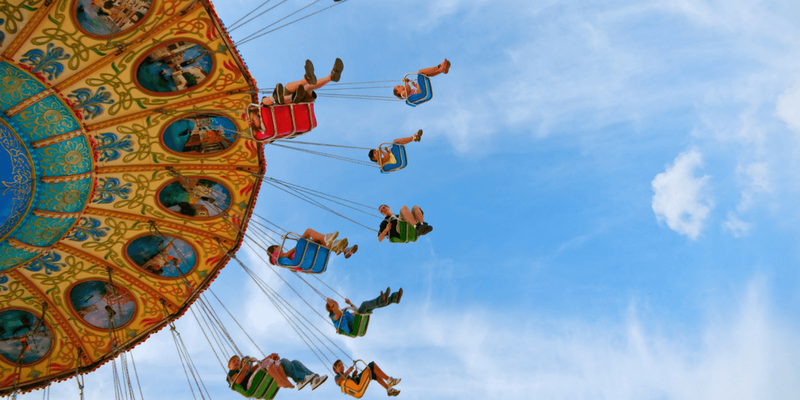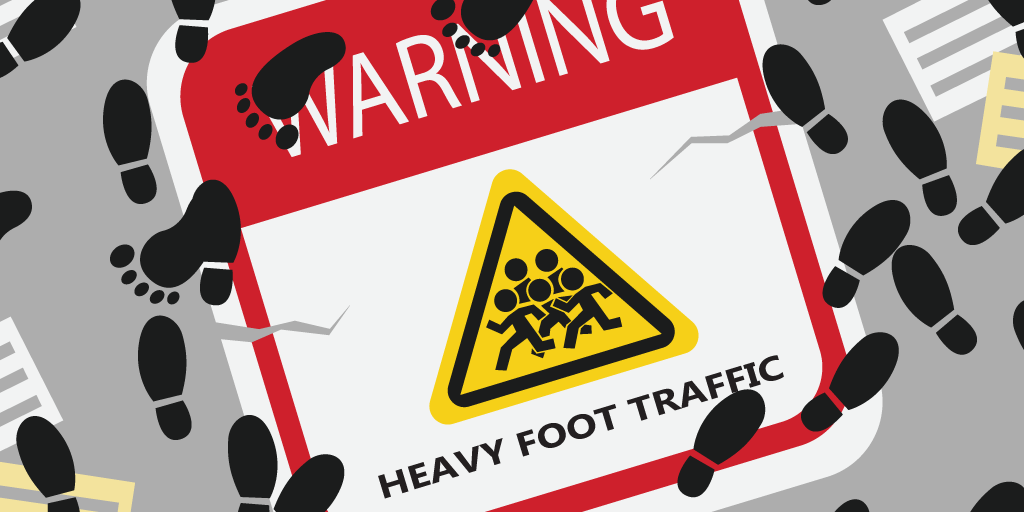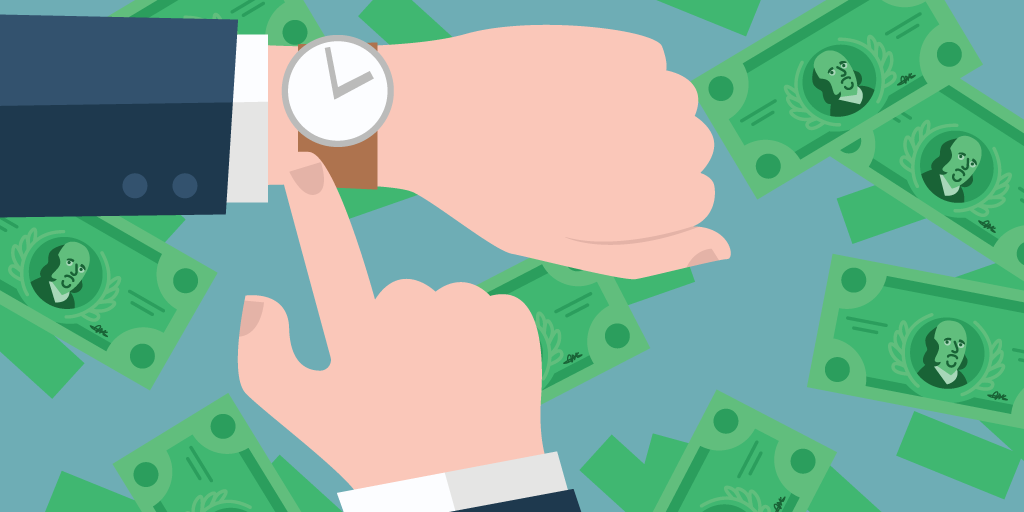Queues don’t have to be experiences to dread. In fact, there’s at least one company that knows how to make queuing part of the experience — Disney.
Yes, that Disney, the one that’s going to produce Star Wars and Marvel movies for the next century. Beyond the movie businesses, Disney is globally known for its theme parks. Ones where many-many people wait in many-many lines.
Despite all that waiting around, Disney queuing theory knows the magic words to make people forget they’re stuck in a queue. Even if you're not in the business of entertaining people, you'd do well to learn from Disney's bag of queuing tricks.
Waiting Is Boring
First of all, let’s drive home just how boring waiting in line can be. You may be able to call upon your own experience (if you can’t, consider yourself lucky). But we want to point out that even experts have concluded that waiting in line is, in science terms, a real bummer.
As researcher David Masiter writes:
“Once we are being served, our transaction with the service organization may be efficient, courteous and complete: but the bitter taste of how long it took to get attention pollutes the overall judgments that we make about the quality of service.”
Maister explains in his paper that despite exceptional service, we may ultimately judge the entire service unsavory because of an inadequate queue experience.
Americans alone spend 37 billion hours each year in queue. One poor queuing experience can make a break a transaction — or an amusement park.
Businesses need to understand this. They might lose a potential returning customer because the queue ruined the experience for them — and returning customers are always cheaper than attracting new ones.
As we’re about to see, Disney must have read Maister, or any of several other researchers who have reached the same conclusions.
An Entertaining Queue

Disney queue management has turned what is typically viewed as a stagnant experience — waiting idly around — into an extension of its amusement park. What do I mean?
Well, what do millions of bright-eyed kids, as well as kids at heart, go to Disney for? To see Mickey and Goofy, eat cotton candy, and watch fireworks sparkle above Cinderella’s Castle.
In short, visitors are there to be entertained. But more clearly, to be entertained throughout every part of the Disney World experience.
As patrons wait in line for Space Mountain or any other ride, Disney characters parade the line, shaking hands, and snapping pictures with those in queue. These are interactive queue lines.
So that, waiting in line becomes an experience of its own. Disney knows to take visitors’ minds off the queue and put it on to something else.
Look, What’s Over There: Queue and the Art of Distraction
When we’re entertained, time flies.
Think about the last time you were engrossed by an activity: maybe it was a book or an award-winning show on Netflix. Did you ever bother to check the clock while you were absorbed by something entertaining?
No, of course not.
Now think about the last time you went through security at the airport. Your phone was in your hand as you swiped through emails, stared at the clock, then back at the line, then back at the clock. You can’t help but feel the pressure of time.
It’s kind of a cheat to invoke Albert Einstein, but what can we do? His famous quote about time relativity is as relevant as ever:
When you are courting a nice girl an hour seems like a second. When you sit on a red-hot cinder a second seems like an hour. That's relativity.
Albert Einstein
The Disney queuing system is centered on keeping patrons entertained — to turn waiting in line into its own kind of amusement. Whether that be a dance, or show on the side, or other attractions to steal people’s eyes.
While typical retailers can’t hire costumed characters to do a jig for their customers, they can still implement Disney’s principles.
Digital Signage Equals Good Time

Many of Disney’s lines feature interactive televisions through which patrons watch a clip or play games while waiting.
So the lesson here is, fill your lines with HDTVs. Industry terminology coins those televisions “digital signage”. Millennial customers, in particular, are fans of the large screens.
Mitigate the sense of boredom, so that customers minds aren’t focused on “I hate waiting in line”, but can tell their friends and family over dinner, “I didn’t even notice I was waiting in line!”
What’s great about digital signage is it also forms another opportunity to communicate with customers. Not only can businesses display information, like promotional events, but they can also incentivize customers to communicate with them.
Take Advantage of Smartphones
Nearly half of the world’s population has a smartphone. Why not make use of them in combination with digital signage?
On some lines for rides, the Disney queueing system asks patrons to text message jokes to a specified number. If their joke is selected, it will be read aloud in the live show that’s to follow. It’s a means of engaging customers.
How can you do the same?
Prompt customers waiting in line to complete surveys, or communicate with your business through social media. Show that you want to have a dialogue, that you’re willing to listen.
Not only does the prompt foster a relationship with customers but it also serves as a means of taking customer’s minds off the line, e.g. maybe they wish your store carried sternos. They’ll leave a message on your Facebook page.
You can further incentivize communication by offering prizes, coupons, rewards, etc.
Not only will you gain valuable customer feedback that can be used to improve your customer experience, but you also turn waiting in line into an active engagement. One that benefits both businesses and customers.
Impulse Purchases

Extending the shopping experience to the line is another time eater. It not only gives customers a distraction, but it also opens the opportunity for last-minute impulse purchases.
A survey estimates that 9 out of 10 millennials have made an impulse purchase. 68% of those purchases being in-store.
While waiting in line with Disney queuing theory doesn’t include merchandise, exiting certainly does. Customers exit through the gift shop, a last minute opportunity to pick up a token: to commemorate the moment—maybe a silly picture as the coaster dropped.
Businesses ought to place high-value or interesting items just before checkout. Customers don’t need to make a purchase, though that would help.
The idea is to place attractive items so that customers are entertained by window shopping, just like the Disney queueing system’s gift shops.
Removing The Queue Altogether
You know what’s better than being entertained on queue? No queue at all.
Disney’s MaxPass as part of their interactive queue lines does away with queues altogether. Instead of waiting in line, visitors receive a text message when it’s their turn to hop on the ride.
Luckily for business owners, they can already adopt similar queue management techniques, aptly called a queue management system(QMS).
A queuing system like Qminder does away with queues and long waiting. Customers want control over their journey. We all value freedom, and nobody wants to feel shackled to the line. So free your customers up, enable them to wander the store or take care of other business while they wait.
What’s our overall lesson learned from Disney queueing theory? It’s quite simple. Boredom is what makes queues maddening. Businesses that want to imbue their own lines with Disney’s magic simply have to remove that boredom.
Thanks to widespread and cheap technologies it’s easier now than ever before to turn waiting in line into an engaging, even, fun experience — s shown by the Disney approach to entertainment in queues.
You can get started on revolutionizing your queue by adopting Qminder as your queue management system. Qminder gives you the tools you need to transform every step of you customer’s journey into an enjoyable experience.






